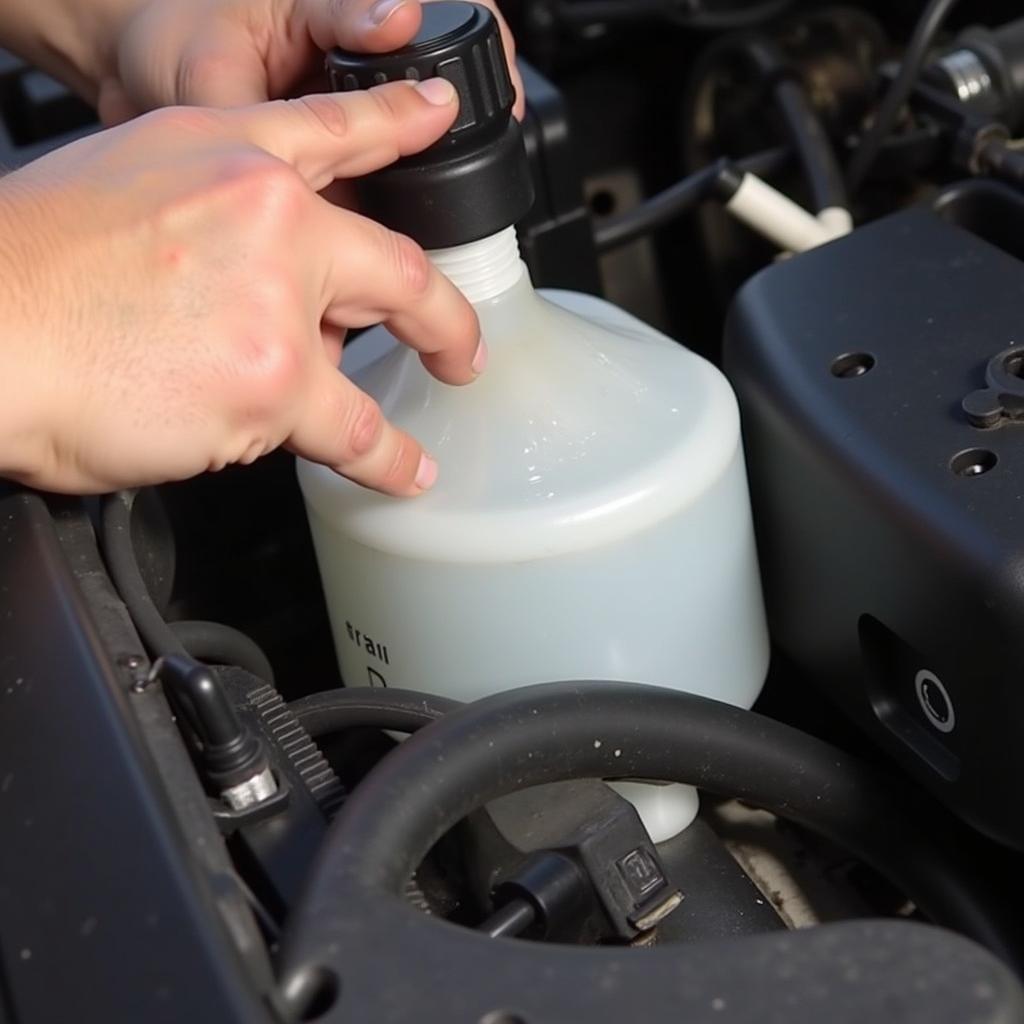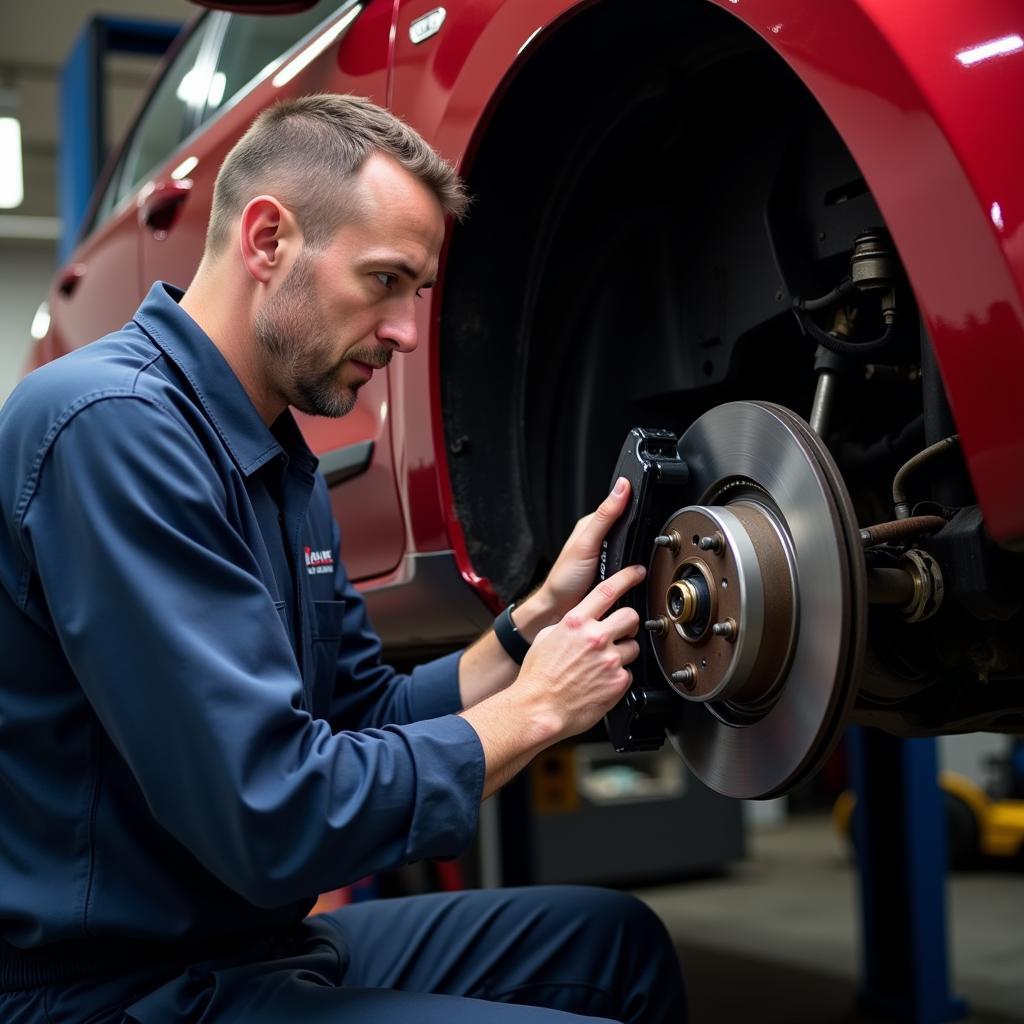A glowing brake warning light on your Kia Rondo’s dashboard can be an unwelcome surprise, triggering concern and a flurry of questions. While it might seem daunting, understanding this warning signal is crucial for your safety and your car’s health. This article will guide you through the potential reasons behind your Kia Rondo’s dashboard brake warning light and offer solutions to get you back on the road with confidence.
 Kia Rondo Dashboard with Brake Warning Light
Kia Rondo Dashboard with Brake Warning Light
Common Causes of a Kia Rondo Dashboard Brake Warning Light
The brake warning light in your Kia Rondo is part of a complex system designed to alert you to potential issues. Here are some of the most common culprits:
1. Engaged Parking Brake
This may seem obvious, but a partially engaged parking brake is a frequent trigger for the brake warning light. Before panicking, ensure your parking brake is fully released.
2. Low Brake Fluid Level
Your Kia Rondo relies on hydraulic pressure to engage the brakes. Low brake fluid, often caused by leaks or worn brake pads, can hinder this process, illuminating the warning light.
 Checking the Brake Fluid Level in a Kia Rondo
Checking the Brake Fluid Level in a Kia Rondo
3. Worn Brake Pads
Brake pads are designed to wear down over time. When they reach a certain thinness, a sensor triggers the brake warning light, indicating the need for replacement.
4. Faulty Brake Light Switch
The brake light switch activates your brake lights when you press the pedal. A malfunctioning switch can disrupt this process, potentially illuminating the brake warning light on your dashboard.
5. ABS Issue
Your Kia Rondo’s Anti-lock Braking System (ABS) is a critical safety feature. A problem with the ABS, often indicated by a separate warning light, can also trigger the brake warning light.
Troubleshooting Your Kia Rondo’s Brake Warning Light
While consulting a certified mechanic is always recommended for brake issues, here’s a preliminary troubleshooting guide:
- Check Your Parking Brake: Ensure it’s fully disengaged.
- Inspect Brake Fluid Level: If low, add the appropriate brake fluid but be cautious of potential leaks.
- Visually Examine Brake Pads: Look for significant wear or unevenness. If unsure, consult a mechanic.
- Listen for Unusual Noises: Grinding or squealing when braking could signal worn brake pads.
When to Seek Professional Help
If troubleshooting doesn’t resolve the issue, or you suspect a more complex problem, seek professional help immediately. Driving with a persistent brake warning light can be dangerous.
 Mechanic Inspecting Kia Rondo Brakes
Mechanic Inspecting Kia Rondo Brakes
Expert Insight
“Many car owners underestimate the importance of regular brake system checks,” says John Smith, a seasoned automotive technician with over 15 years of experience specializing in Kia vehicles. “Ignoring the brake warning light can lead to more severe and costly repairs down the line.”
Keeping Your Kia Rondo’s Brakes in Top Shape
Preventative maintenance is key to avoiding brake problems:
- Regular Inspections: Adhere to your Kia Rondo’s recommended maintenance schedule for brake inspections.
- Timely Fluid Changes: Regularly replace your brake fluid as per the manufacturer’s guidelines.
- Mindful Driving Habits: Avoid aggressive driving that can accelerate brake pad wear.
Conclusion
Addressing the brake warning light on your Kia Rondo’s dashboard is not just about mechanics; it’s about prioritizing safety. By understanding the common causes and taking appropriate action, you can ensure a smoother, safer driving experience. Remember, a well-maintained car is a safe car.
